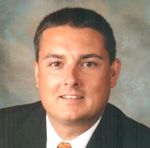Many veterans enlisted in the military instead of going to college. Instead of learning where their dorm room was, they learned where they would be stationed for the next year. Instead of learning statistics, they learned the art of war. For those who spent their formative years in the military, when their friends are graduating from college, they are being honorably discharged without an idea of how to transfer the skills they learned in the military to the civilian world.
In honor of Veterans Day, the International Training Institute (ITI), the education arm of the unionized sheet metal and air conditioning industry, is shedding light on all veterans – especially female veterans – who struggle to find a career post-military. Currently, 7.9 percent of female veterans ages 18 and older are unemployed compared to 4.2 percent for males 18 and older, according to the Bureau of Labor Statistics.
First Lady Michelle Obama recently shared her initiative, Joining Forces, which creates opportunities for the civilian population to support military families, and shed light on the issue in a recent Redbook article.
“She’s been trained to be a leader,” Obama said regarding all female veterans. “She’s been trained to be the best of the best, not just for herself, but for her kids. And this country’s not giving her that opportunity, someone who wants it so desperately.”
The ITI has partnered with Helmets to Hardhats to bring in quality apprentices, and although the organization has been helping veterans nationwide find careers in the construction trades for more than a decade, many veterans still aren’t aware of all the program offers.
Meanwhile, college-age veterans ages 18 to 24 are struggling. The unemployment rate among all veterans ages 18 to 24 is 21.3 percent, according to the Bureau of Labor Statistics. Their civilian counterparts in the same age group are unemployed at the rate of 13.1 percent.
The ITI welcomes veterans into 153 unionized sheet metal and air conditioning industry schools across the country – whether they use the services of Helmets to Hardhats or find them on their own. Veterans have the benefit of direct entry into the schools as well as other benefits if they qualify for the program.
“Although veterans have proven work experience, dedication and discipline, they have a higher unemployment rate than the everyday person off the street in the same age group,” said Larry Lawrence, regional field representative/instructional development specialist for the International Training Institute (ITI), the education arm of the unionized sheet metal and air conditioning industry. “That doesn’t make sense to me. People with this military training and an honorable discharge should be able to work.”
It’s in the national standards for the ITI to give preferential standing to applicants that come to training centers through Helmets to Hardhats. A few training centers are examples of how that standard can be taken a step further.
In Pennsylvania, the sheet metal workers union gives veterans direct entry into the state’s two apprentice programs that take upwards of 18 months from application to acceptance for the average civilian applicant. In the land of brotherly love, a military background means a career can begin 18 months faster.
“We accept the honorable discharge and say we want that kind of candidate,” said Aldo Zambetti, ITI field representative and former coordinator at the training center at Local 19 in Philadelphia. “The coordinator there is the human resources department. He can have the resume and see if someone has HVAC experience or construction experience and put them to work as long as it’s available.”
Pennsylvania veterans interested in sheet metal work – including air conditioning and heating, welding and computer drafting, among others – can bypass the interview and test, enroll in the apprentice program and go straight to any available work. While all apprentices are in school, they can work while they learn for free.
“The ITI has always had a great experience with Helmets to Hardhats apprentices,” Zambetti said. “I’ve not seen one dropout. I’ve never seen one person fail to graduate to be a journeyperson. I see the Helmets to Hardhats vets in their first five years at their positions, and they are holding higher level jobs, and I think it’s because of their military training.”
In Connecticut, project labor agreements (PLA) are calling for a percentage of the workforce to be military veterans.
“We’re putting it in every one of our PLAs,” said David Roche, business manager at Local No. 40. “It’s helping the guys who deserve a job when they come back, and we’re getting quality workers. It’s a win-win for us all around.”
Since 2007, more than 100 workers have come to trades in the state through the school at Sheet Metal Workers Local No. 40.
“They have a work ethic. They’re used to taking direction, getting up early and going to work every day. They pay attention. They catch on quicker and they seem to excel through the program and afterwards,” Roche said. “Some of our best workers came through the military.”
Darrell Roberts, executive director for Helmets to Hardhats, was a union sheet metal worker, served in the U.S. Navy for four years and the National Guard for six. Active service members looking at an honorable discharge commonly don’t know their options. Giving the organization a call or filling out a profile on the website only helps open the lines of communication. This way, the veteran has a chance to review all opportunities and find the career that matches his or her background, personality and future goals in time for the discharge. The program also provides mentorship and eases the transition into civilian life.
“On one hand you’re really helping the service member,” Roberts said. “On the other hand, you’re helping the workers and contractors because you’re bringing on good workers. It’s good for everyone involved.”
As a veteran, Roberts understands the importance of stability and finding a career once the military part of life is over.
“If you’ve served in the Guard or active duty, you’ve served,” he said. “You’ve served us. We don’t turn them away.”
Veterans have a lot of choices, which can be good or bad. Trades like the sheet metal workers help by making the process easy.
“Direct entry is a great item. It’s a great boon. It’s not unique, but it is rare. It’s something we’ve been pushing across the United States with all the trades,” said Roberts of ITI’s direct entry program for sheet metal workers. “You have to educate people that they can make a career out of being a sheet metal worker. The goal of Helmets to Hardhats is to show there are real quality careers in construction, and we’ll help you with that transition. We try to get the stumbling blocks out of the way.”
 North Dakota’s energy regulators are considering new rules to make the state’s “Bakken” crude oil, which has been involved in a number of explosive train crashes, safer to move by rail.
North Dakota’s energy regulators are considering new rules to make the state’s “Bakken” crude oil, which has been involved in a number of explosive train crashes, safer to move by rail. WASHINGTON – Ongoing rail service problems have left power plants from Minnesota to Texas low on coal as an early blast of winter weather hit the nation’s midsection this week.
WASHINGTON – Ongoing rail service problems have left power plants from Minnesota to Texas low on coal as an early blast of winter weather hit the nation’s midsection this week.

 President Barack Obama announced his intent Nov. 12 to nominate the following individuals to key Administration posts:
President Barack Obama announced his intent Nov. 12 to nominate the following individuals to key Administration posts: